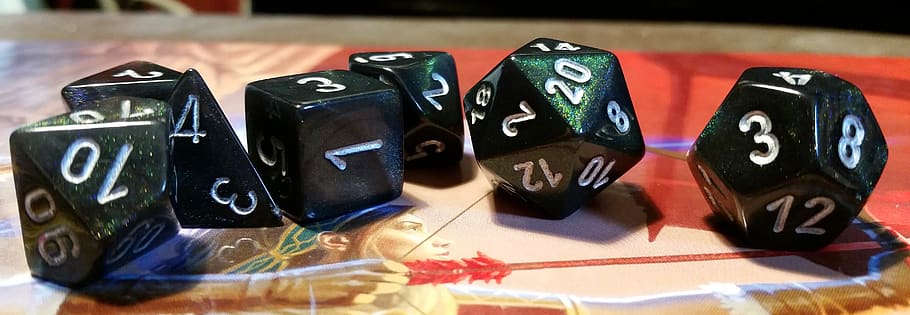Skill Rolling
To determine whether an action is successful or not, the player must roll dice.
This applies to skill checks, for combat, check out Combat Rolls.
The basic stats are Attributes and Skills.
Unless stated otherwise, the player must roll one die corresponding to the relevant Attribute, and another one corresponding to the relevant Skill, and only the die with highest result is taken into consideration as the roll result.
This is usually stated as Roll Agility & Athletics, for example.
If you need examples, check out Skill Rolling Examples. Difficulty
To succeed, the highest rolling dice must be above or equal to a certain difficulty level.
The standard difficulty level for a normal action is 6. This is usually called the Standard Difficulty.
The GM can increase or decrease this number depending on circumstances or conditions making the action more or less challenging.
If you need examples, check out Skill Rolling Examples.
Modifiers
Even though it was already stated somehow, just to be crystal clear, there are 2 types of roll modifiers:
The possible outcomes of a roll are the following:
This applies to skill checks, for combat, check out Combat Rolls.
The basic stats are Attributes and Skills.
Unless stated otherwise, the player must roll one die corresponding to the relevant Attribute, and another one corresponding to the relevant Skill, and only the die with highest result is taken into consideration as the roll result.
This is usually stated as Roll Agility & Athletics, for example.
If you need examples, check out Skill Rolling Examples. Difficulty
To succeed, the highest rolling dice must be above or equal to a certain difficulty level.
The standard difficulty level for a normal action is 6. This is usually called the Standard Difficulty.
The GM can increase or decrease this number depending on circumstances or conditions making the action more or less challenging.
If you need examples, check out Skill Rolling Examples.
Modifiers
Even though it was already stated somehow, just to be crystal clear, there are 2 types of roll modifiers:
- Dificulty Modifiers: They modify the difficulty of a roll. They come from external circumstances that make something easier or more difficult to achieve. For example, it is harder to hit an opponent in pitch darkness (increased difficulty), and it is easier to spot a threat in a huge featureless salt flat (decreased difficulty).
- Result Modifiers: They modify the outcome of a roll. They come from internal factors that hinder or give an advantage when attempting something. For example, a wounded character is hindered when trying to run (outcome is decreased), and a mutation that protects against sun radiation should give you a bonus when trying to withstand it (outcome is increased).
The possible outcomes of a roll are the following:
- Success - At least one die scores above the target difficulty.
- Partial success - The highest die scores a number exactly equal to the target difficulty. In these cases, the GM defines the nature of the outcome following one of these options:
- Incomplete: Some degree of success was achieved, yet not in as much as expected.
- Costly: Success is achieved, but with a trade-off, a steep cost, a collateral effect, or by risking something or someone.
- Failure - If no single die manages to achieve the target difficutly level.
- Critical failure - If both dice score 1. Something really bad happens.
Remove these ads. Join the Worldbuilders Guild









Comments